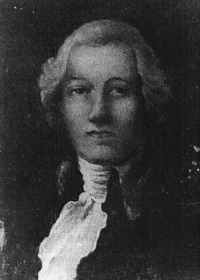On the 6th of June, I arrived in Cavinti, a small pueblo on a rise that blocks two streams. In its outskirts, there are excellent pastures. The natives grow a little rice and camote but they manifest no application to work or activity, circumstances that are all the more puzzling, since by inferring from their various kinds of embroidery they are not totally devoid of the most appropriate aptitudes for this activity.
On my journey to Pasanhan [Pagsanjan], I soon crossed extensive rice lands stretching from one side to the other of the road as far as the eye can see. In the vicinity of this pueblo, there is a very steep incline where one can come across some rocks, residue of a volcano now extinct.
Pagsanjan owes its origin to some (illegible word) of Sangleys, who with some Japanese and natives inhabited the opposite bank of the river and had (undecipherable word) of establishing themselves where now it exists since 1673. Its town-proper is average in size. The flat expanse of arable lands is planted with rice, which is the only crop, not to mention the raising of a small quantity of indigo of excellent quality.
The road to Sta. Cruz, a league away from that pueblo, is partly level and well kept. One comes upon large rice plantations, some indigo and, from time to time, very luxuriant small forests that pleasantly alter the scene. The town-proper is on a lovely, fertile plain which the lake floods. Isolated fairly high houses are by the side of the roads. Their lots, determined by respective rights of ownership, [are] enclosed with fences. This kind of orchard is generally planted with bonga, the best quality indigo and cacao. The frequent floods that destroy all of them dampen the natural zeal of the inhabitants. …
The women weave a kind of attractive fabric of silk and abaca which they call cambray naghavit. The tiangui [market days] which last from Wednesday to Thursday attract a numerous crowd of people also from Manila and some from the lake area. The articles of merchandise most purchased are the guinaras, cambray, vari-colored raw silk and cotton, some ribbons, rattan hats, handkerchiefs and various embroideries. The foodstuffs are plentiful and are largely for provisioning the capital.
